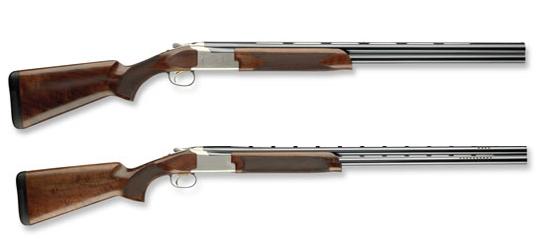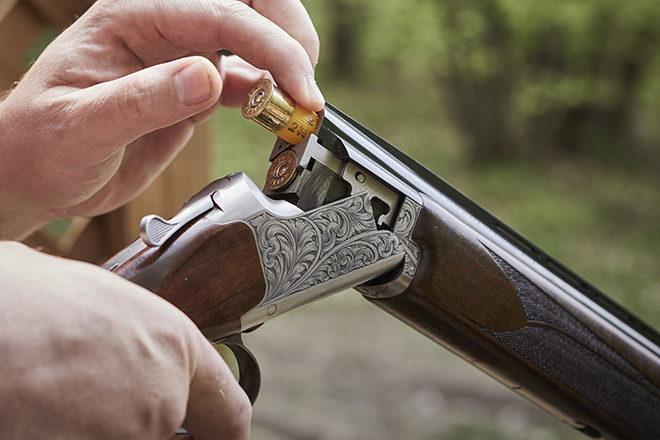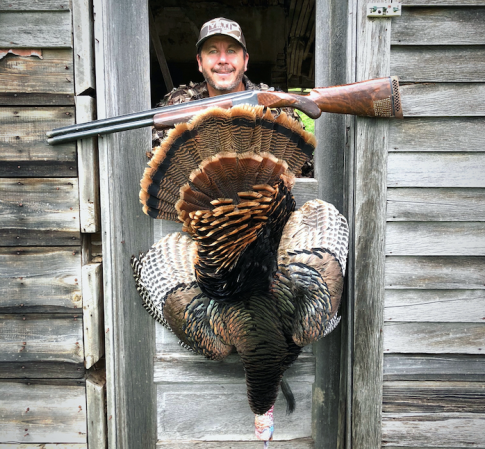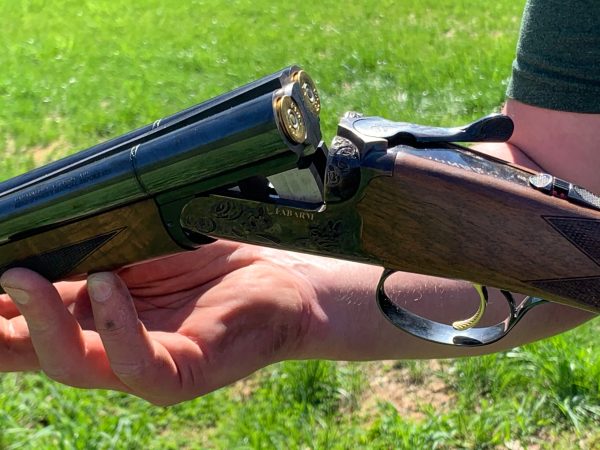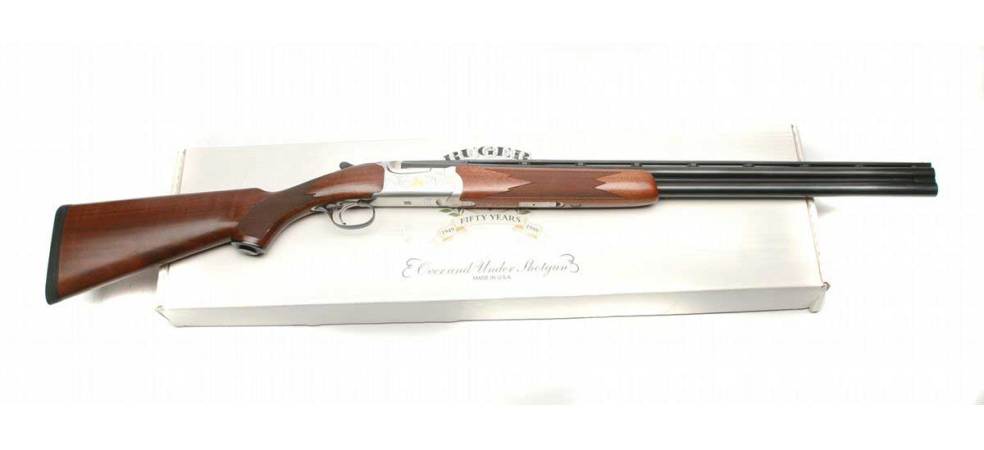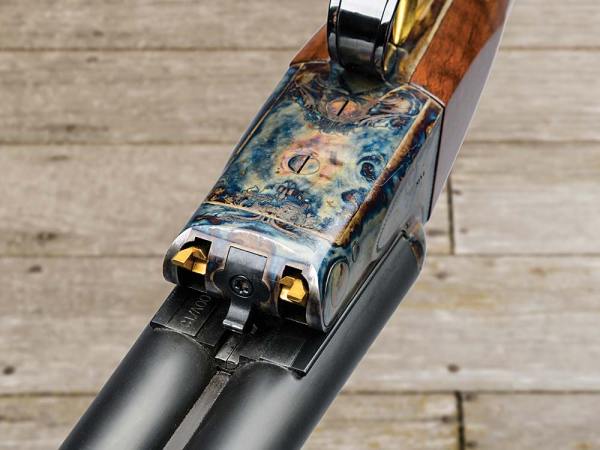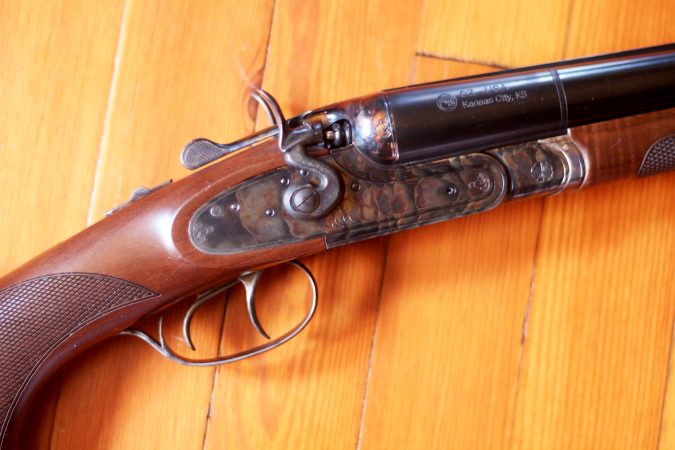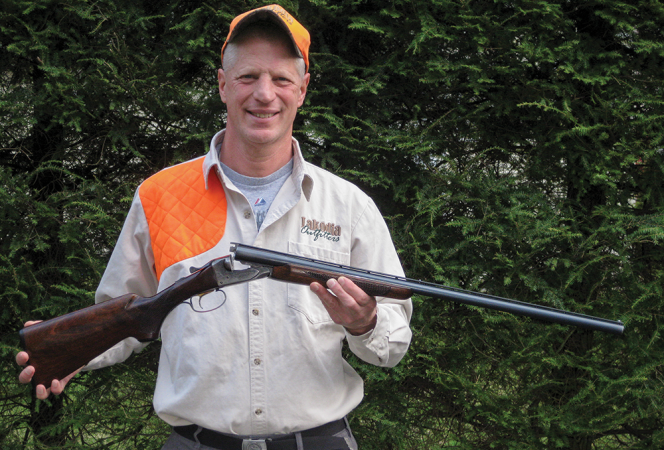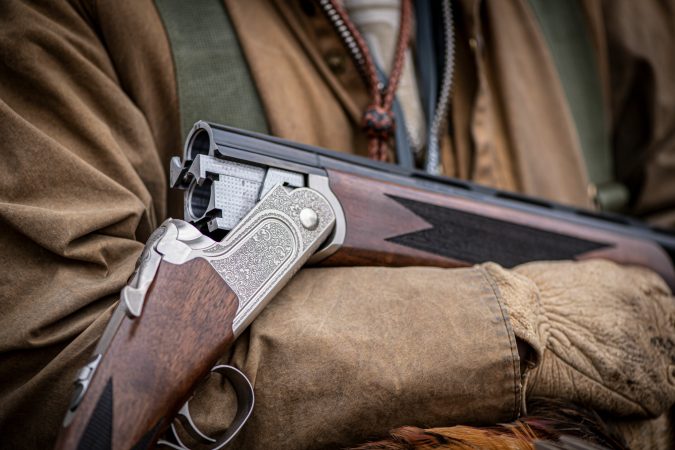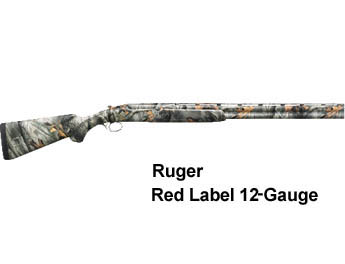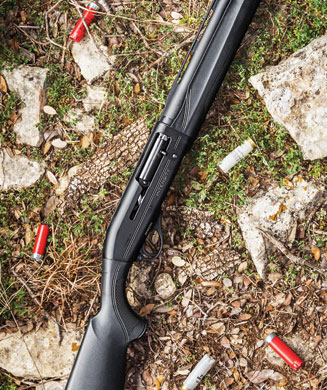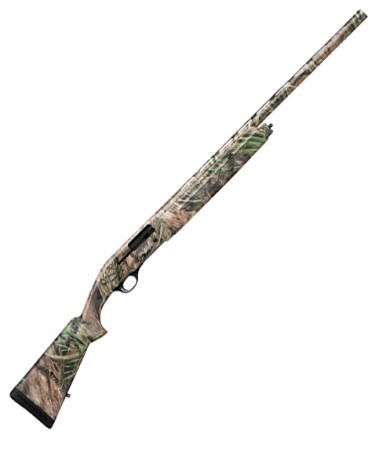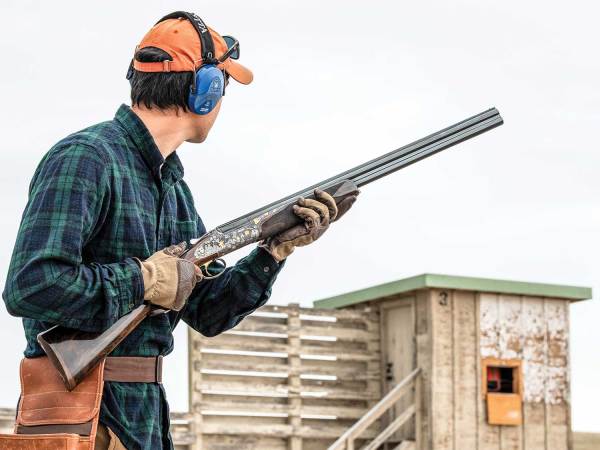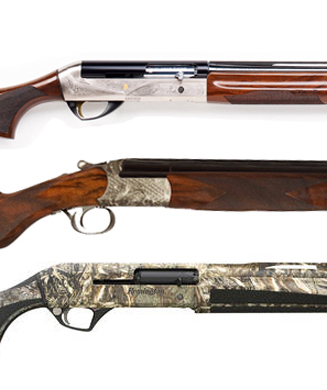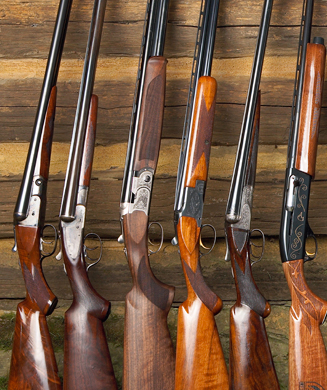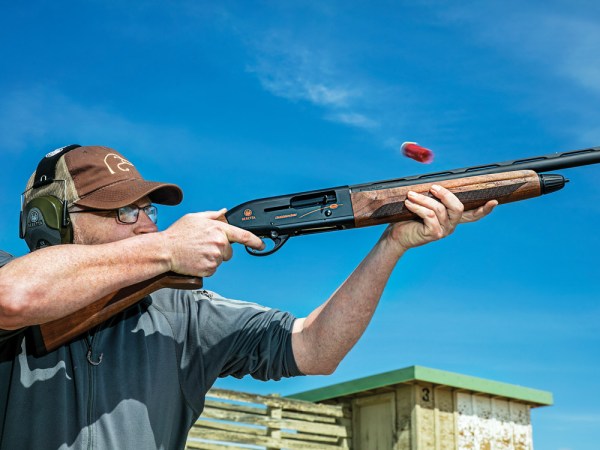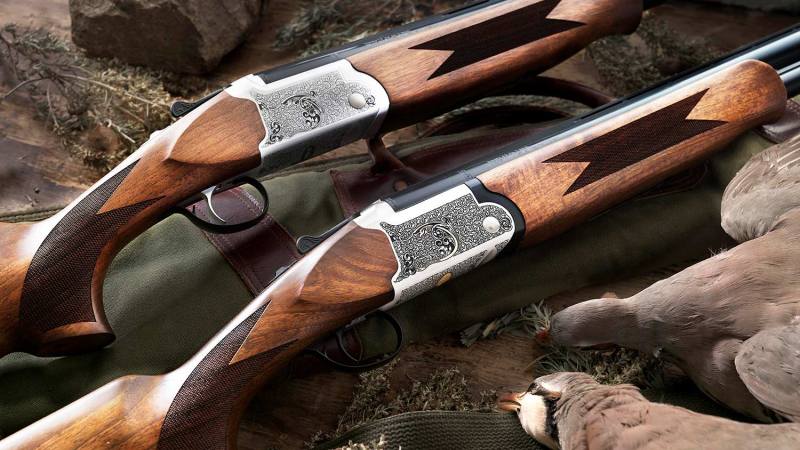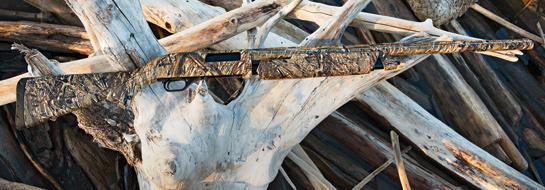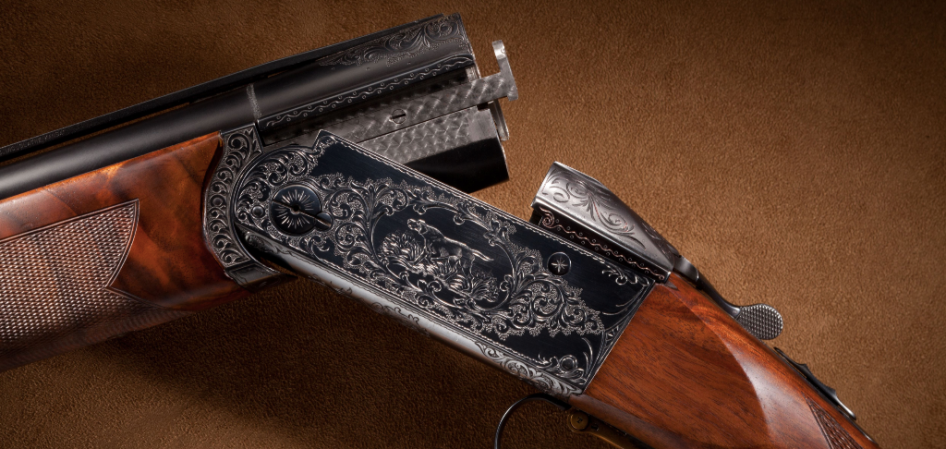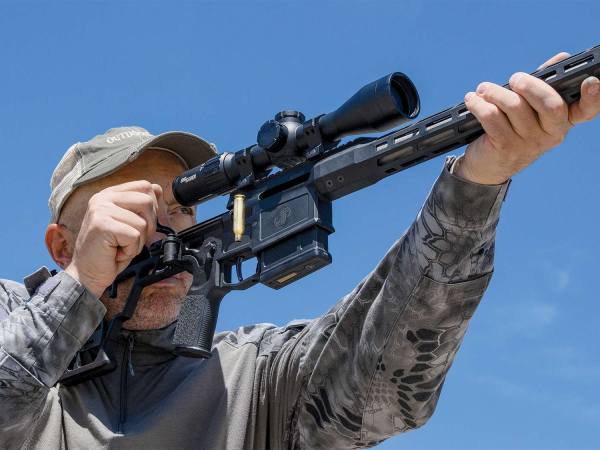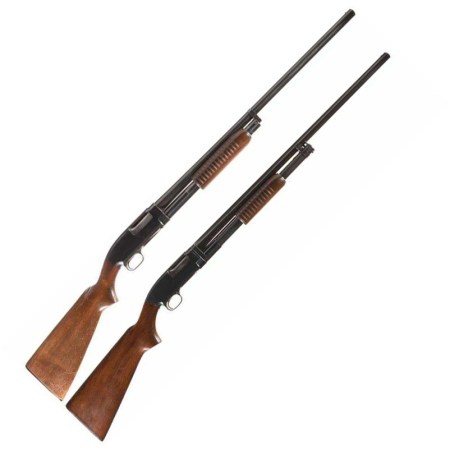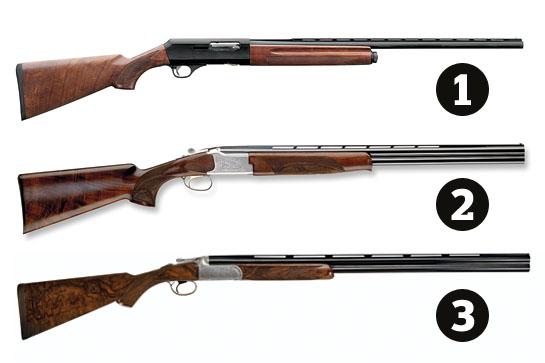We may earn revenue from the products available on this page and participate in affiliate programs. Learn More ›
We perfected the double-barreled shotgun over 100 years ago. There’s nothing that can be done to improve a Holland & Holland sidelock or a Boss-style over-and-under and it’s silly to even try, unless of course you want to sell guns to those of us who can’t afford the hefty price tag that comes with perfection.
The new Browning Citori 725 is one of those guns. You could be forgiven if the announcement of yet another Citori shotgun didn’t motivate you to rush to your local gun store with a wad of cash in hand. There have been so many versions of the Citori introduced over the years that it would be easy to overlook a legitimately new iteration of the gun that replaced the famous Superposed over-and-under in Browning’s lineup back in the 1970s.
Yet the 725 is the real deal–a new shotgun with several refinements that bird hunters and target shooters will eagerly embrace if my guess is right.
Compared with the Citori 625, which Browning rolled out in 2008, the 725 is sleeker, in keeping with the trend toward low profile over-and-under actions. Its thinner look is no optical illusion. (Though there is a bit of that in here, too, which I’ll touch on in a moment.) When designing the 725, Browning was able to take about 5/32-inch off the height of the receiver.
That might not sound like much, but it makes a profound difference in the proportions of the gun. According to Browning, its engineers were able to remove metal from both the top and bottom of the receiver. This was achieved in part by narrowing the diameter of the hinge pin, which Browning says it was able to do without compromising the strength of the action.
**Sleek Lines **
Set next to a 625 Field model the difference is easy to see. Not only is the receiver more trim but the stock style has been changed to accentuate the 725 Field’s elongated lines (pictured top). Both the Citori 525 and 625 Field models had Etchen-style grips, which many competitive shooters favor, but these large vertical grips reinforced the Citori’s blocky build. The pistol grip on the new 725 Field is less vertical but still comfortably snugs into the shooter’s hand, allowing for good control.
Even the vents in the elevated rib have been changed to improve the 725 Field’s look. The number of vents in the top rib has been reduced from 8 to 6 resulting in longer gaps between the contact points where the rib is soldered to the barrel. This bit of optical illusion has no impact on the gun’s performance, but visually adds to the impression of sleekness. (It’s worth noting that the 725 also comes in a Sporting model, which retains the Etchen-style grip, the 8 rib vents and the has ported barrels.)
The design of the forend has changed too. The 725 has the barest hint of a Schnabel-style flare on the forend, in contrast to the more pronounced curves on its predecessor, giving it a cleaner look. From an aesthetic standpoint, it is the best looking Citori to date.
Mechanical Excellence
The 725 is more than just a pretty face, however. For the first time Browning has incorporated mechanical triggers into the Citori. Since these triggers don’t rely on the recoil of the first shot to enable the second trigger, the shooter can get a follow-up shot even if the first barrel doesn’t go. This is a handy feature for a fleeing bird, but what really sets these triggers apart is the quality of the trigger pull. Both barrels on my sample broke at 3 pounds 13 ounces–not an ounce more, not an ounce less. Crisp and consistent, they are among the best I’ve seen on a shotgun.
The rest of the gun is built to the same standard of excellence. The action locked up tight with a smooth closing motion; the safety/barrel selector switch on the tang is easy to manipulate, snapping from one position to another in a positive manner; the wood-to-metal fit was excellent throughout; and the ejectors performed flawlessly, popping out empties with authority.
Field Capable
Between the slick new design and the quality craftsmanship, the 725 handled like a champ at the range. The distribution of its weight–7 pounds 4 ounces on my gun–balanced nicely between my hands and the 28-inch barrels are long enough to give it good swinging characteristics without hindering its ability to get to the shoulder for quick shots. (It is also available with 26-inch tubes.) Crossers, incomers, straight-away shots–everything you can expect to see from a pheasant, grouse or quail in the field–the 725 Field took on without difficulty.
The “Inflex” recoil pad, which is supposedly built in such a way as to keep the stock from recoiling into the shooter’s cheek, worked just fine. The texture of the material is such that it never wanted to hang up on my clothing as the gun was brought up, yet anchored securely into the shoulder for the shot. The pad is a bit proud of the wood, which gives it a clunky look. It’s the one visual miscue on an otherwise handsome gun.
For adornment, the Citori 725 has machine-cut checkering that wraps around the grip without any distortion and roll stamp engraving on the receiver, showing a pair of pheasants on one side and ducks on the other both nestled amid a border of scrolls. The engraving is simple, but not striking, and isn’t likely to offend nor give any real pleasure to the beholder. As we’ve come to expect on Browning shotguns the hunting style trigger is gold plated.
The walnut stock on my sample had deep, rich figure in it and the blacking on the barrels, which are joined by solid ribs on either side, was smooth and even. The top rib has a two-bead design, both of which are solid white, that’s simple and functional.
For the price, $2,470, the 725 Field is a good mid-level over-and-under with a combination of looks and craftsmanship that will perform in the field and might even motivate you to take your hard-earned cash to the gun store.

